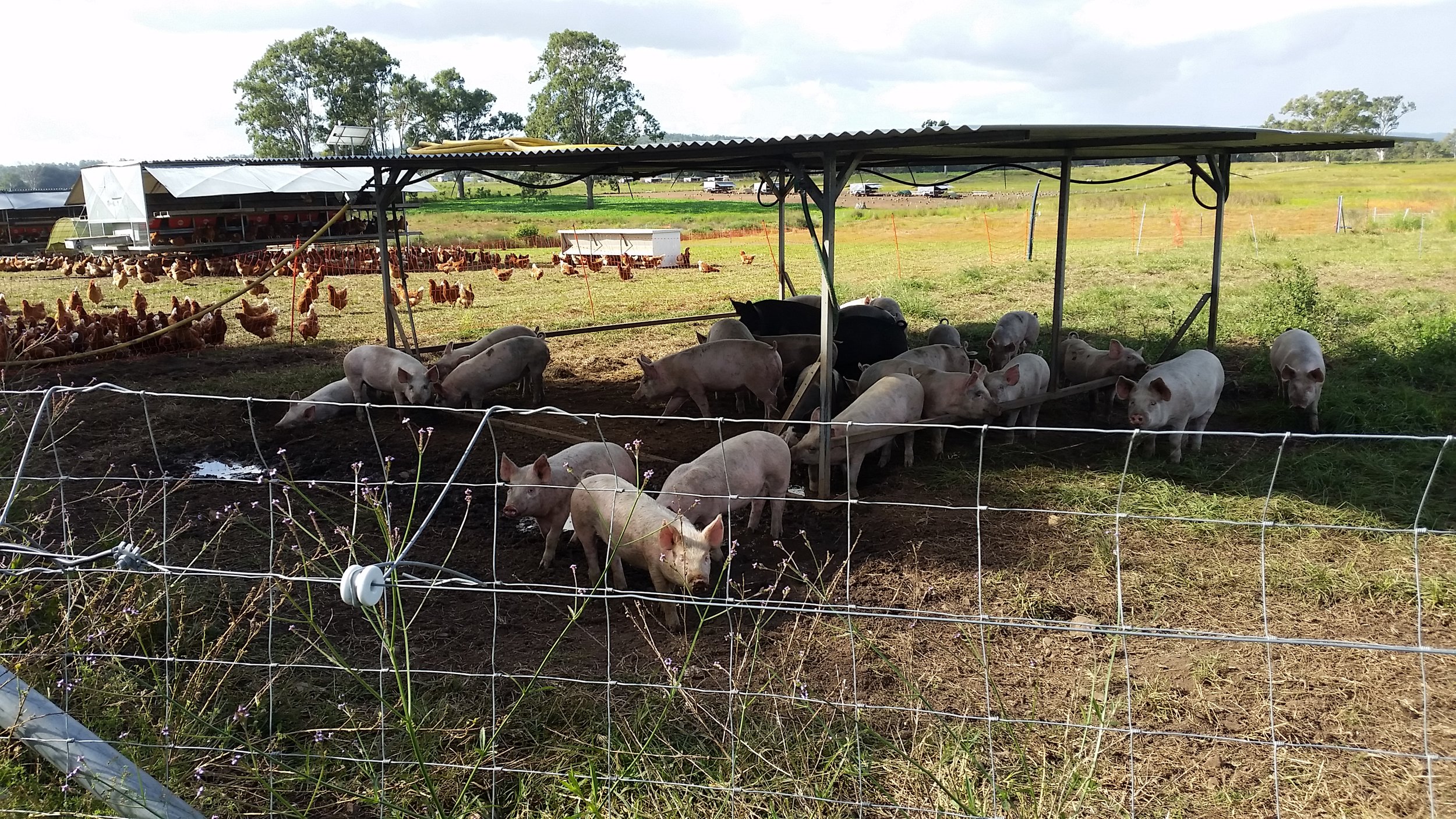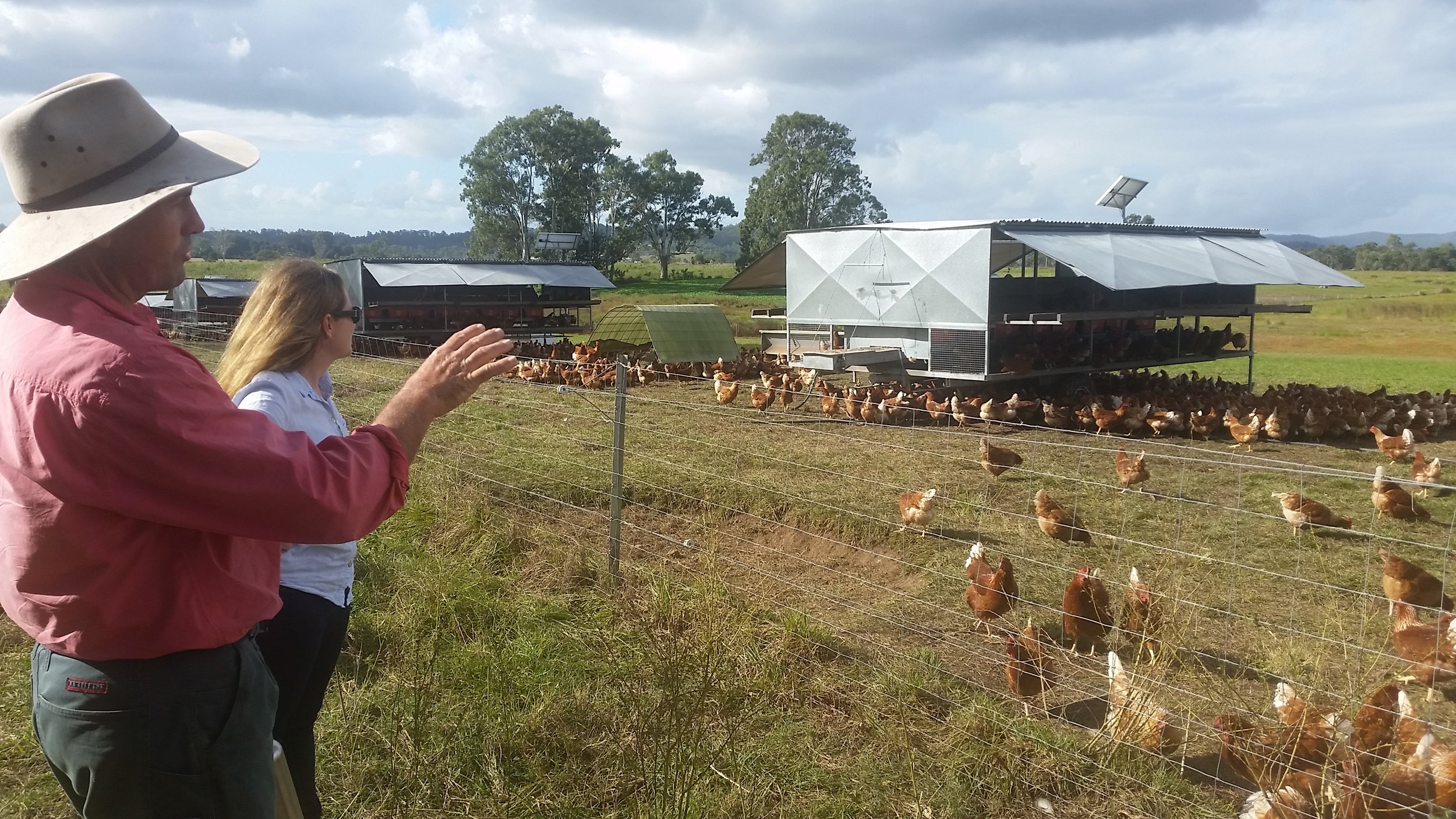By Laura Fisher.
As I was in the neighbourhood in May, I dropped into see Megan and Stuart Andrews at their new enterprise Forage Farms, just outside Gympie, Queensland. Stuart and Megan own Marloo, a property near Rylstone, and collaborated with KSCA on The Hemp Initiative. During both Futurelands2 and Cementa 17, Stuart hosted two terrific excursions demonstrating how the principles of Natural Sequence Farming (NSF) were being applied to rehabilitate this very degraded property [you can see Stuart talking NSF at Marloo here and here].
At Forage Farms, the situation is quite different. When I arrived I could make out a patchwork of smallish paddocks, with varied vegetation. Stuart and Megan are taking NSF in a new direction here by integrating free range chooks (for eggs not meat) and pigs with livestock. They have implemented a rotation system, with each animal playing their different part in each paddock: foraging, aerating the soil, mulching the grass, activating the microbes and the dormant seeds and leaving their manure behind. This system is the kind Joel Salatin of Polyface Farms is known for.
A word you’ll often hear Stuart use is ‘aggrade’. Whereas many farming methods that rely on synthetic inputs degrade the land, the system in play at Forage Farms is an ‘aggrading’ system. Every decision is designed to build something: to build soil, build water holding capacity and build fertility. Key to this is fostering plant diversity (with weeds valued for the services they provide to landscapes as much as other plants). We talked about how the ideal farming landscape would function somewhat like a rainforest, with a huge variety of plants ranging from trees to small shrubs supported by rich humic soils beneath. The wider the range of plants on a farm, according to the principles of NSF, the more likely it is that the land can take care of itself and stay fertile through fluctuations of wet and dry weather for example.
What I learnt with this visit is that livestock farming – which is what many farmers who adopt regenerative principles do – can only take plant diversity so far. Many regenerative farmers follow the holistic management strategies popularised by Allan Savory, who based it on the behaviour of buffalo in the African savannahs. The buffalo move across the landscape in tight herds, graze upon it, knock the plants down into the soil with their hooves, manure it and move on. In a similar way, regenerative farmers ensure healthy pasture for their livestock by shifting them across a mosaic of paddocks to give the land periods of rest and regeneration. But Stuart pointed out to me that those African landscapes were kept healthy through the grazing and foraging activities of lots of animals, not just the buffalo. He’s concerned that if you only have sheep and cattle in your paddocks, you encourage the reproduction of grass and more grass. You might end up with varied species of grass, but you’re likely to exclude other kinds of plants from the landscape.
So this is what the experiment going on at Forage Farms is all about. It takes NSF’s focus on maximising plant diversity to heal and regenerate landscapes as a starting point, and throws in more species of animal to stimulate the growth of more species of plant. Not only do the different foraging behaviours of the pigs and chooks aid in land rehabilitation, but free-range pork and eggs diversify the farm’s income sources, and make it possible for a farmer to run an ethical, profitable business.
On the early morning drive from Miles to Gympie












